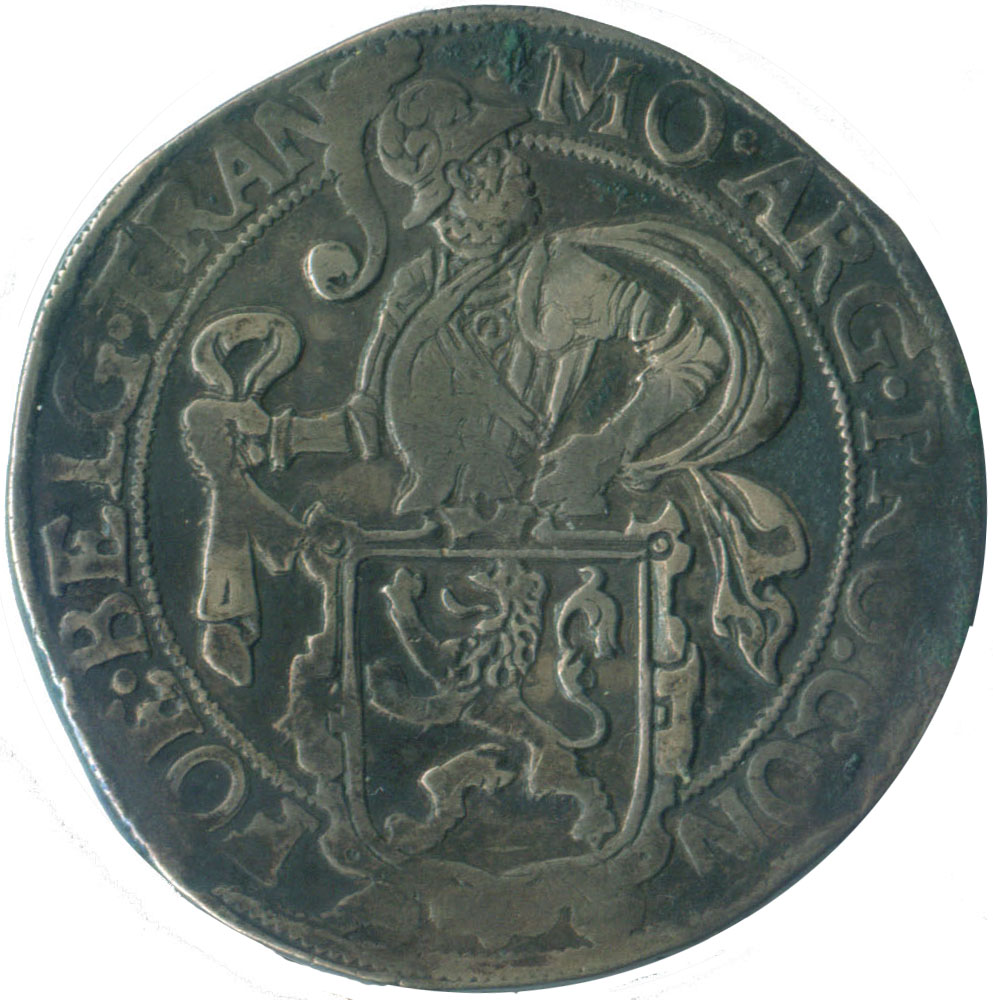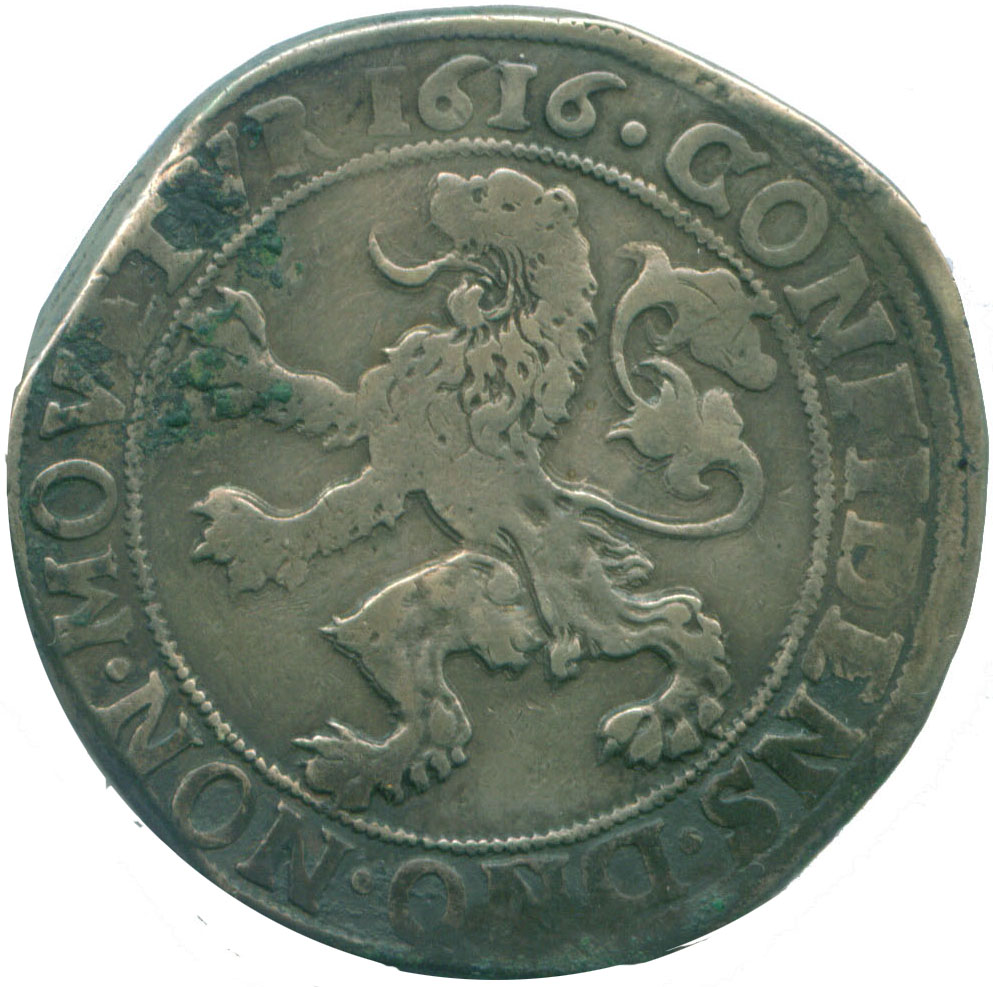| SPECIFICATIONS | |
| Denomination | 42 Stuivers |
| Alloy | Silver.750 |
| Type | Struck |
| Diameter | 41.8 mm |
| Thickness | 2.3 mm |
| Weight Legal | 27.68 gms |
| Weight | 26.8 gms |
| Shape | Round |
| Edge | Plain |
| Die-Axis | 90° |
| Mint | Overijssel |


|

| 
| ||||||||||||||||||||||||
| Overijssel : Verk 139.3 DEL#856 KM#12 | ||||||||||||||||||||||||||
This Lion daalder which is the same weight as a reals of eight was the origin of the name Dollar. They were replaced in the 18th century by the heavier coins with finer silver the Rijks-daalder, and the Ducatoon or silver rijder See list of Types .
Delmonte in The Silver Benelux says 110,000 of the Lion Daalders
were minted 1n 1616 in Overijssel indicated as TRA
or TRAN or TRANS This type issued from 1606-1647.
There appear to be variations in the design of the lion between coins
of six provinces and with period in the 17th century when they were
minted. The Lion is similar that illustrated for Overijssel in Krause
which is significantly differenct from the other Lion Daalders. It is
also very different from the false 1616 Overjssel illustrated in 1971
July issue of De Geuzenpeenning. This gives me more confidence
although this is no guarantee it is genuine. Lion dollars were
usually produced from thin planchets that did not fully fill the
thickness of the dies, thus they were often weakly struck.
This dollar could be a contemporary counterfeit from early colonies in north-east America from Virginia to Massachusetts. A deposition was taken in Boston on July 29, 1701 stating that "Dog or Lion dollars" had been counterfeited in Massachusetts. The Maryland Act of 1708 used the derisive term Dog Dollar in evaluating this coin. The image on this coin clearly looks more like a "dog", unlike the heraldric lion on the 1644 WES coin, listed in Codrington, as found in Lanka.
John Lorenzo, an expert on Colonial Coins informs me that the yellowish color and green oxidation on the coin which possibly indicates a brassy composition, which were in his opinion made at these mints during periods of low silver inventory.
The VF condition coin was scanned at 600 dpi and displayed at 150 dpi. It was purchased on ebay in 2001 March from a US dealer.
As the tone of coin as purchased was probably artificial it was removed. I am advised by an expert on forgery of coins that waxing and Acid treatment in a bath could reproduce the effect. I have seen what appears to be lower quality and toneless fake daadlers for sale on ebay which is a worry.
Alex Basok of rustypennies.com informs me that coins from a hoard that is found in the sea are usually so encrusted, that in the process of separating them from each other and the coral, they are subjected to very heavy acid cleaning. That dissolves copper out of top layer of the coin and leaves it very porous. Also the color always look very unnatural. The coins that come from a hoard found in the ground fare much better. But still originally most of them have to be "cleaned". Often it involves a mild solutions of vinegar or lemon juice or similar home concoctions, and the results are usually quite pleasant. However, if anybody tells you that "this coin has never been cleaned", they are stretching the word never. Almost all coins that we have on collectors market today were cleaned when they were found. The 1616 daalder, may very well be an American contemporary counterfeit, the color that you see on that coin is often a result of retoning effort. It does not look natural at all.
I thank John Lorenzo and Alex Basok for their detailed E-mail on this Lion Dollar.
This webpage on Americana hosted by Lakdiva : website for Coins of Lanka.